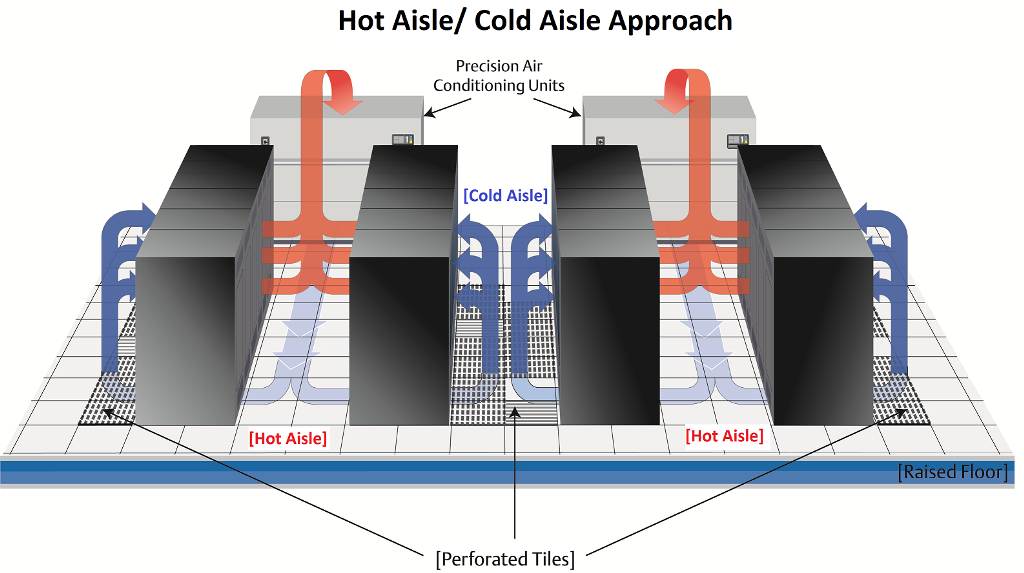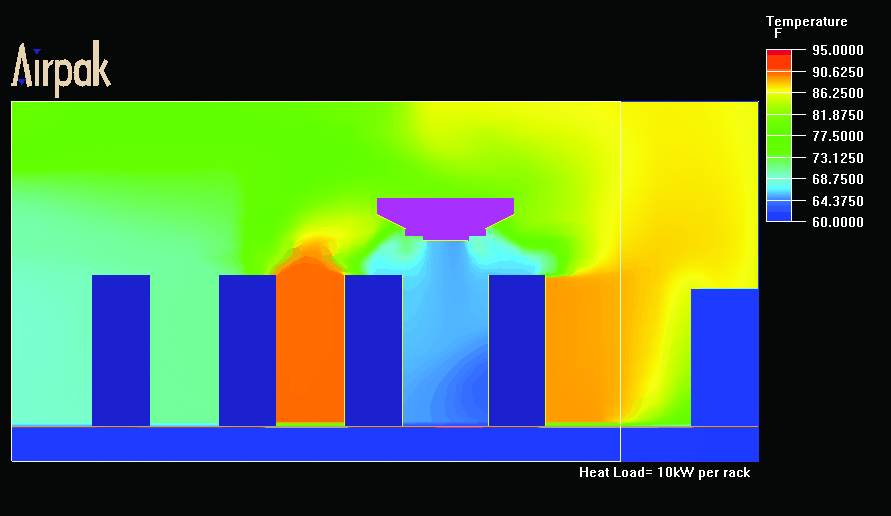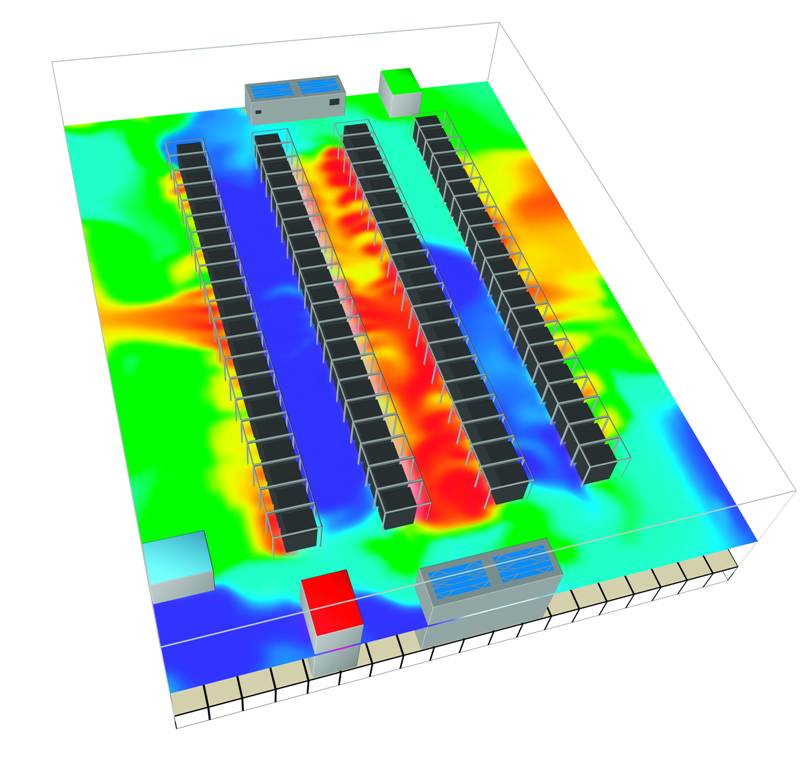CRAC unit sizing: Dos and don’ts
A CRAC unit can consume a lot of power, but using it correctly can save costs and avoid fatalities. Read more about correctly sizing CRAC units in this tip.
Computer room air conditioning (CRAC) units are used for perimeter cooling in data centers. CRAC units provide precision cooling and are vital for the optimum performance of data center hardware such as servers, storage, networking, and communication systems. The right sized CRAC unit can manage the heat density of data centers effectively and avoid fatalities.
The typical power consumption trend in today’s data centers is as follows:
- 50% of the power is consumed by the main hardware including servers, storage and networking equipment.
- The other 50% is consumed by auxiliary equipment required to run the IT systems.
Cooling consumes more than 35% of the 50% power consumption of the auxiliary equipment. Out of this, 15% is consumed solely by the CRAC unit; the remaining 20% by the air distribution system.
CRAC unit sizing dos
Load on the datacenter
Earlier, servers were set up in the form of towers. Today, servers are placed in racks to reduce their physical footprint. A smaller footprint allows more computing equipment and power in a smaller area, resulting in greater heat dissipation. Hence the need to understand the load on the data center in determining the size of CRAC units.
If heat density increases, you need to increase air flow from the CRAC unit, and if heat density decreases you must lower it. The plenum below the raised floor (see Figure 1) allows air to flow at a specific cubic feet per minute (CFM). You set the CFM based on the load on the rack, and size the CRAC unit to handle that load.
The CRAC unit releases cool air through the holes or perforations in the raised floor at the front or entry point of the server racks. According to me, the hot aisle - cold aisle approach is necessary, and the cold aisle should have the perforated tiles.
Figure 1: Hot Aisle - Cold Aisle approach (click to enlarge)
Overall data center design
Understanding your legacy system and present requirements is of utmost importance in CRAC unit sizing. You should carry out assessments for leakage, vapor sealing, heat density, and identify obstacles such as pillars and debris before making CRAC unit sizing decisions.
Computational fluid dynamics (CFD) can be used to assess a data center's CRAC unit requirements. As shown in Figure 2 and 3, CFD provides thermal images of the server room to help identify “hotspots”. Hotspots are those areas of the room which stand a chance of thermal overrun (temperatures above 25˚C). CFD provides images of hotspots, and they help determine the load and size of CRAC units, and where they must be placed for optimum cooling results.
Figure 2: Thermal image of a computer room (click to enlarge)
Figure 3: Computer room thermal map (click to enlarge)
Ensure that the air flow in the datacenter is not blocked, since that can lead to miscalculations in sizing CRAC units. For example, the data center may have structural beams (which pass through the raised floor) that block air flow to the racks. This increases cooling requirements for particular racks.
Place the server racks in such a way that they do not restrict CRAC unit air flow. Beams can be located in the hot aisle, since they don't require perforations. Server fans usually take cool air in from the front, and release it from the back. If the hot aisle - cold aisle approach is not applied, the front end of one rack will face the back of another rack, and heat dissipated through the rear of the rack will be sucked in by the other, increasing cooling requirements. This is known as short cycling, where chilled air returns to the CRAC units without passing through the equipment. This can result in wrong sizing of CRAC units.
Future needs of the organization
Most IT systems have a three year refresh cycle. Moore’s law, which states that the number of transistors that can be placed inexpensively on an integrated circuit doubles approximately every two years, applies here, as you cannot not refresh the servers. If servers aren’t refreshed, power consumption and heat density rise, thus increasing pressure on the CRAC units.
However, you may not need to replace your existing CRAC units. You can instead utilize solutions that fit into the existing CRAC units. For instance, the smart aisle solution (a containment of the cold aisle) communicates with existing CRAC units to increase or decrease the CFM of cool air that will be released from the raised floor. Intelligent, integrated solutions like digital scroll technology also help CRAC units sense changes in heat density, and accordingly increase or decrease the CFM.
CRAC unit sizing don'ts
CRAC unit under-sizing
Server rack inlets are perforated for heat dissipation. The laws of physics state that the electric power that goes into servers gets released in the form of heat, and this heat needs to be cooled. The temperature at the rack inlets should be 21° C, plus or minus one.
Under-sized CRAC units can lead to thermal over-runs. For instance, laptops when used for prolonged periods of time heat up, and there is a strong chance of automatic reboots. You cannot afford to have servers running mission-critical applications rebooting. For example, if automated teller machines (ATMs) face downtime due to backend server rebooting, users and business alike will be impacted.
CRAC unit over-sizing
Traditional air conditioners cannot control humidity. CRAC units are precision cooling systems, and can precisely control the humidity levels in the data center. Most server vendors allow a relative humidity of 50%, going up to a maximum of 55% RH, and a minimum of 45% RH.
Over-sized CRAC units are cause condensation or static discharges. Too much humidity causes condensation, while humidity lower than 45% RH raises the possibility of static discharges, both of which are detrimental for server equipment.
 About the author: Pratik Chube is the Country General Manager, Product Management & Marketing, at Emerson Network Power (India) Pvt. Ltd. He is an energy logic expert who conceptualizes and designs solutions for vertical specific applications, as well as develops cutting-edge technologies and products. Pratik has an MBA from Mumbai University, and an electronics engineering degree from REC Jaipur. He has over 11 years of experience in the channel business.
About the author: Pratik Chube is the Country General Manager, Product Management & Marketing, at Emerson Network Power (India) Pvt. Ltd. He is an energy logic expert who conceptualizes and designs solutions for vertical specific applications, as well as develops cutting-edge technologies and products. Pratik has an MBA from Mumbai University, and an electronics engineering degree from REC Jaipur. He has over 11 years of experience in the channel business.
(As told to Mitchelle R Jansen)












